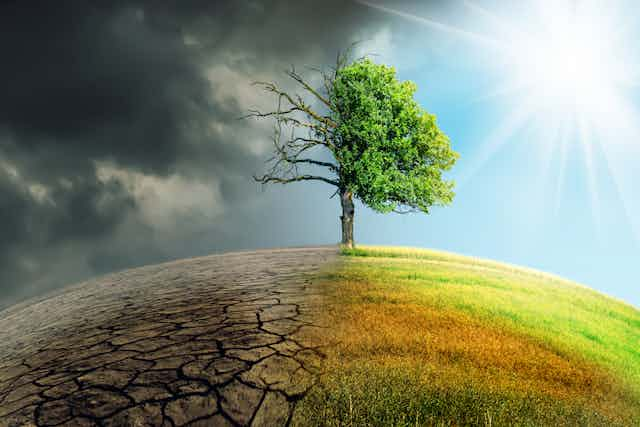The word “climate” makes most of us look up to the sky – however, the IPCC’s new special report on climate change and land should make us all look under our feet.
Land, the report shows, is intimately linked to the climate. Changes in land use result in changes to the climate, and vice versa. In other words, what we do to our soils, we do to our climate – and ourselves.
The first part of the report makes for difficult reading. Humans, it says, now exploit more than 70% of the Earth’s ice-free surface, and more than a quarter of land globally is suffering degradation as a result of human activities.
Soil is being lost up to 100 times faster than it is formed, and desertification is growing year on year. Temperature increases and heavy rains associated with climate breakdown are further degrading already damaged soils.
All this is already causing food insecurity, and unless action is taken the impacts will only get worse. The report states that unless we stop and reverse land degradation, food supply chains will become unstable, and nutrient levels in foods will decrease. These impacts will hit those living in precarious situations and in poverty the hardest, but the effects will be felt around the globe.
From soil to oil
How is it possible that soils have become so degraded? Don’t we need well functioning soils to produce food? The truth is, the modern farming system is based around oil, not soil.

For most of our history, humans could only produce as much food as the local ecological and soil conditions could support. Every time a crop was taken from the fields, nutrients were removed, making the soil less fertile. To cope, some societies developed complex and sustainable systems in which nutrients were returned to the soil in the form of organic waste. Using the local environment and labour to maintain soils in a good state was the key to survival.
Modern farming, in contrast, has been shaped by the power of fossil fuels. The problem of limited soil fertility was overcome through fertilisation, mainly with synthetic nitrogen, which is made using natural gas or coal.
Today, emissions from nitrogen fertilisation are a major source of greenhouse gases, and the emissions produced in making that nitrogen are the biggest carbon cost in a loaf of bread.
In addition, the development of diesel-powered machinery made it possible to cultivate land which was previously inaccessible. As a result, more land is brought into cultivation, further destroying natural ecosystems such as forests. As the IPCC points out, deforestation is indeed the biggest source of agriculture-related CO₂ emissions.
Machines and fertilisers enabled more intensive farming, in which organic material is not returned back to the soil and organisms such as earthworms and microbes which make soils function are constantly disturbed through ploughing and compaction – such intensive farming leads to soil degradation and exhaustion.
Coming back to land
Until recently, the “tractors and chemicals” recipe for food production served humanity well. It drove huge increases in global yields, and made the human population boom possible. But today the extent and severity of soil degradation through human over-exploitation is such that no amount of chemicals and machinery can compensate.

In Australia, years of irrigation have turned soils saline and toxic to crops. In the UK, the drained peatland soils of the Fens, which produce the most high-grade foods, are disappearing at a rate of 2cm a year. Spain, a huge producer of fresh fruits and vegetables, is in danger of desertification due to increasing temperatures and droughts. In sub-Saharan Africa, a quarter of the land is degraded, while 20% of China’s soils are polluted. Across the world, soils have been pushed beyond their capacity to recover, and humanity’s ability to feed itself is now in danger.
To ensure that we eat well and live well in the future, we’ll need to reverse the trend towards greater homogenisation which drove food systems so far. The future is localised and diverse, because while the “tractors and chemicals” recipe worked well across the world, at least for a time, there is no easy solution for sustainable land use.
The IPCC report recognises that reversing land degradation is a socio-ecological issue, and one that requires locally appropriate action. It stresses the importance of land rights and secure access, driving home the message that land and its peoples are indivisible.
Going forward, what does “restoring land” mean for our food systems? It means supporting the invaluable bottom-up experimentation being practiced by farmers and land managers and helping them develop and share their expertise. It means making sure that public subsidies to agriculture support restorative farming practices. It means working with big buyers and farmers to encourage land-stewardship and growing a greater diversity of crops. It means putting soils and their health at the centre of all land policies.
Regenerating land is a win-win, for humans and their ecosystems, if we dare to look beyond the immediate short-term horizon.


